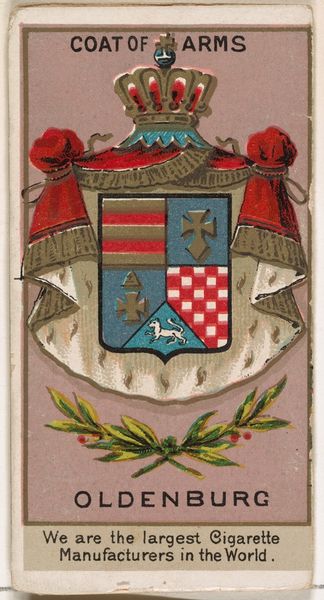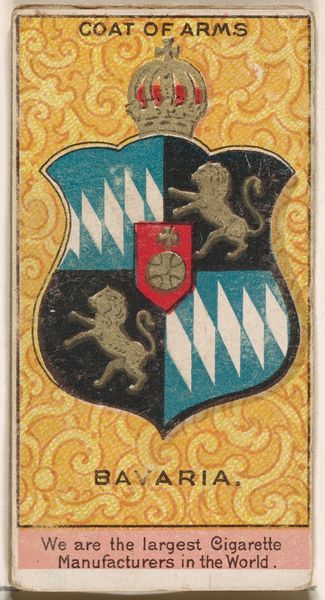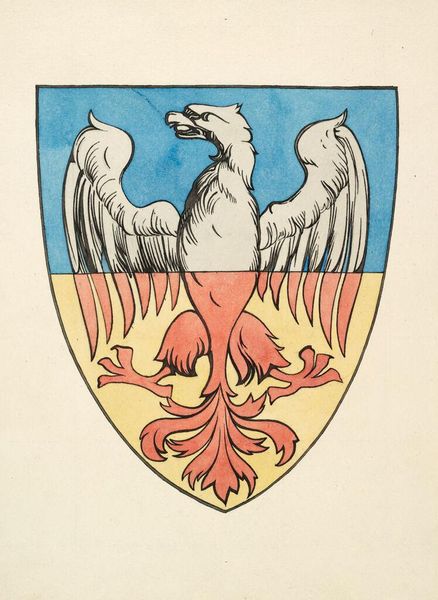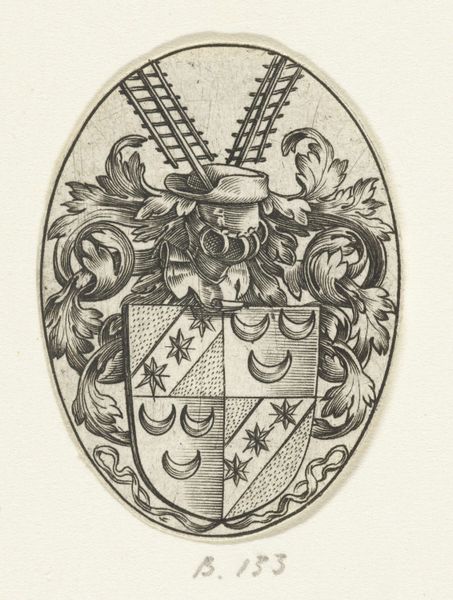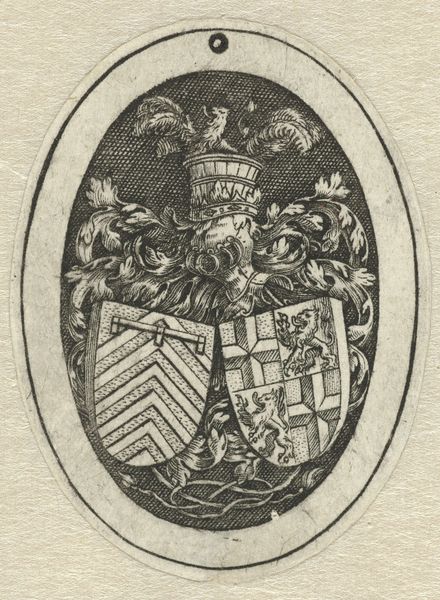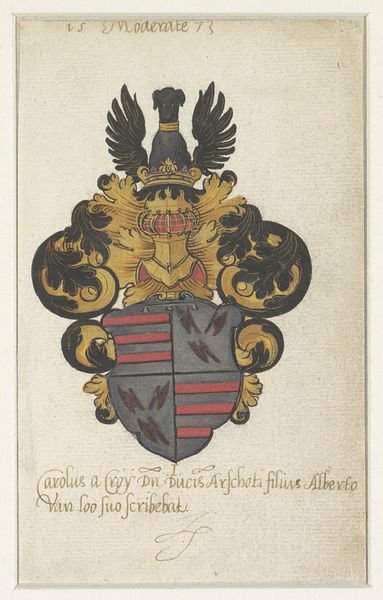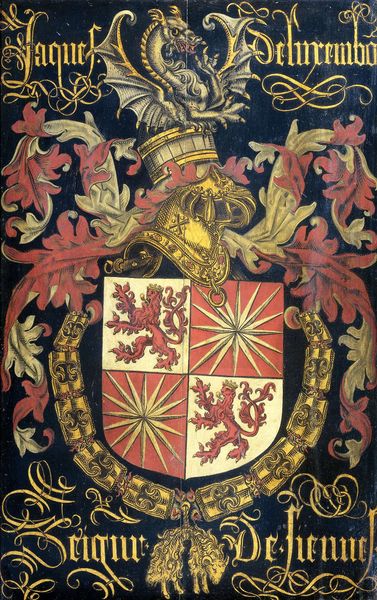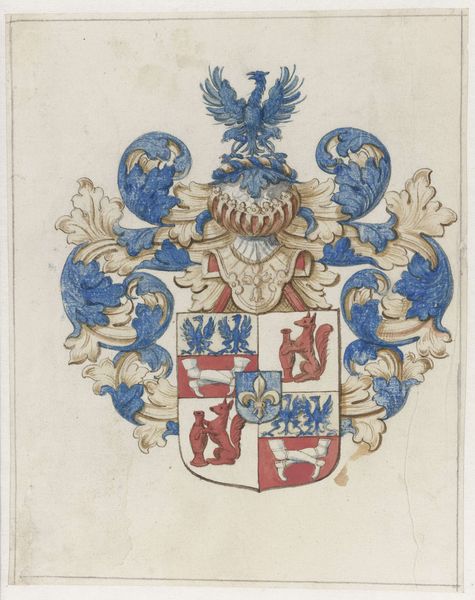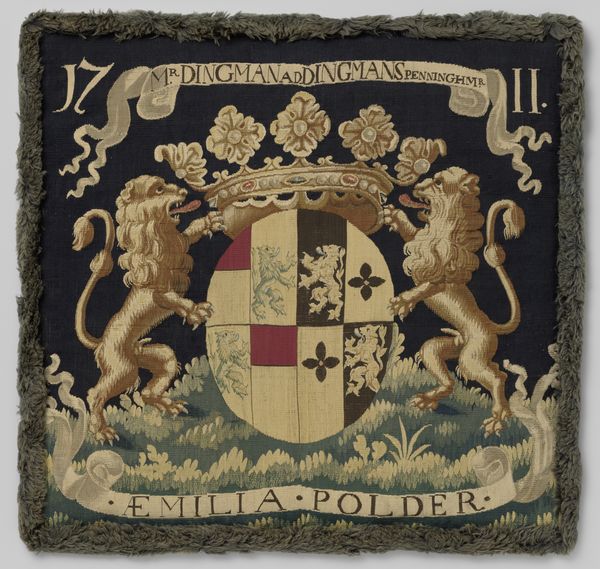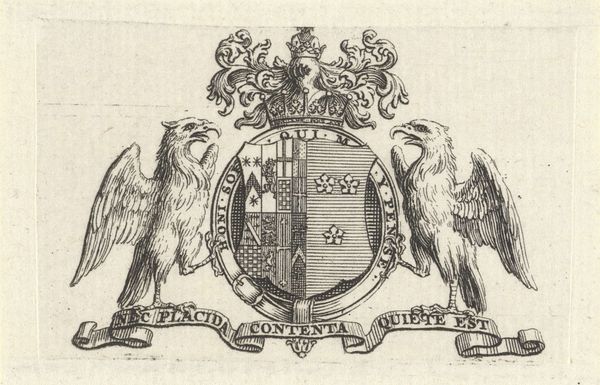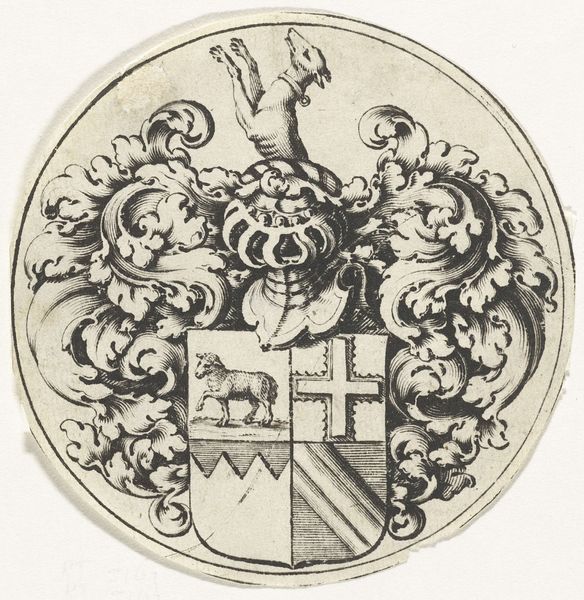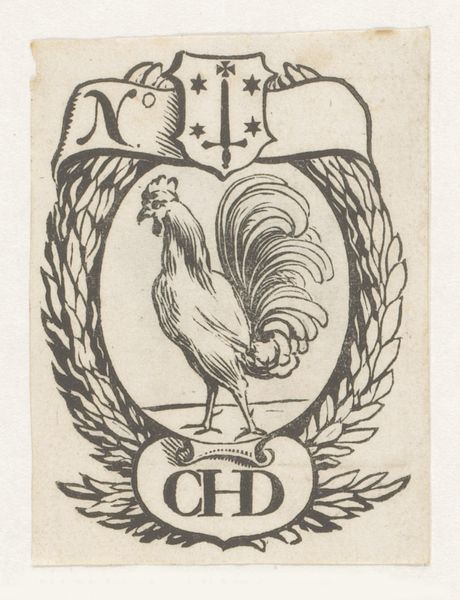
drawing, graphic-art, print, embossing
#
drawing
#
graphic-art
#
medieval
# print
#
embossing
Dimensions: 7-5/16 x 6-5/16 in.
Copyright: Public Domain
Curator: Here we have the “Arms of the Counts of Botenlauben,” created sometime between 1480 and 1500. This anonymous piece, a remarkable example of late medieval graphic art, uses embossing to bring the heraldic symbols to life. Editor: The first thing that strikes me is the bold simplicity. Black eagles and roosters against that subtly colored field – it’s assertive. It speaks of identity, of declaring allegiance and power, wouldn't you agree? Curator: Absolutely. Heraldry in this era served as a potent visual language, and this piece is no exception. Consider how it projects socio-political power. What is articulated through the eagle and chicken? Is it simply a way to display aristocracy? Editor: More than simple display, I'd argue. These symbols carry meaning, especially when displayed publicly on shields or banners. It also serves as a reflection of what society finds appropriate during this time. But those chickens, though! They introduce a sense of localism, a kind of down-to-earth quality alongside the more majestic eagles. Curator: That's a keen observation! The placement is key; it reflects the nuanced negotiation of identity within the medieval class structure, doesn't it? What might those chickens signify to people of lower classes? Editor: Perhaps it was also a commentary on the values that family holds. Perhaps the eagles are a marker of social prestige, while the roosters signify vigilance and agricultural abundance. The colors, the red and white, would have also held significance within their cultural context. The graphic nature reminds me how public these images become. It makes me think about the use of art to project power. Curator: Precisely! And viewing it today through an intersectional lens prompts questions about gender dynamics. Whose stories are prioritized in the historical record, and whose are obscured? In many ways this artwork leaves behind important breadcrumbs about these markers. Editor: Indeed, it makes you think about the many power dynamics and hidden figures from that time. These objects were tools used to tell a particular narrative of social status. Thank you for opening my eyes to some of the cultural narratives this piece presents. Curator: Thank you.
Comments
No comments
Be the first to comment and join the conversation on the ultimate creative platform.
